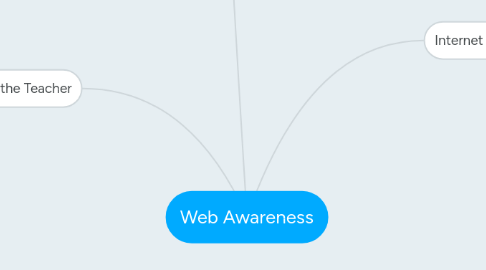
1. Internet Safety
1.1. Cyber Bullying
1.1.1. "Cyberbullying involves the use of information and communication technologies to support deliberate, repeated, and hostile behaviour by an individual or group, that is intended to harm others." -Bill Belsey
1.1.2. Types of Cyber Bullying
1.1.2.1. E-mail
1.1.2.2. Message Boards/Comments
1.1.2.3. Text Messages
1.1.2.4. Social Media
1.1.3. Resources
1.1.3.1. http://www.cyberbullying.org/
1.1.3.2. http://www.bullyingawarenessweek.org/
1.1.3.3. http://bullying.org/
1.1.3.4. http://en.wikipedia.org/wiki/Cyberbullying
1.1.3.5. http://www.edpsychmno.weebly.com
1.2. Sexually Explicit Material
1.2.1. Increased access to content
1.2.1.1. Accidentally come across sexual content
1.2.1.2. Intentionally/Curiosity
1.2.2. "Research now shows that although they are incapable of processing the information, they may store it and continue to be reminded of it as they grow older." - Canadian Centre for Child Protection Inc
1.2.3. Impact on child development
1.2.3.1. May begin to shape sexual values, attitudes and behaviours
1.2.3.2. May prematurely sexualize children
1.2.3.3. May incite them to experiment with sexually explicit behaviour
1.2.3.4. May increase social acceptance of high risk behaviour
1.2.3.5. May change expectations of relationships, physical appearance and behaviour
1.2.3.6. May increase risk of victimization, as personal boundaries can be blurred
1.2.3.7. May increase risk of problematic sexual behaviour against other children
1.2.3.8. May interfere with healthy sexual development
1.2.4. Resources
1.2.4.1. https://www.kidsintheknow.ca/pdfs/KIK_ImpactOfViewing_en.pdf
1.2.4.2. http://www.google.ca/goodtoknow/familysafety/advice/
2. Web Privacy
2.1. Effects of Posting Pictures With Smartphones
2.1.1. https://www.youtube.com/watch?v=N2vARzvWxwY
2.1.2. Threat of geotagging
2.1.2.1. The process of adding geographical identification metadata to various media to find out longitude and longitude of an individual.
2.1.2.2. Photographs
2.1.2.3. Videos
2.1.2.4. Websites
2.1.2.5. SMS/Text Messages
2.1.2.6. QR Codes
2.1.2.7. RSS Feeds
2.2. Questions/Concerns for Students
2.2.1. Responsible for any inappropriate or questionable content that you publish
2.2.2. Would anyone be embarrassed or hurt by what I published?
2.2.3. Who will be able to see what I published?
2.2.4. What would my parents or teachers say if they saw what I published?
2.2.5. How would I feel if the head of my dream job or dream school saw what I published?
2.2.6. How would I feel if what I published was all over the national news?
2.3. Resources
2.3.1. http://en.wikipedia.org/wiki/Geotagging
2.3.2. http://icanstalku.com/how.php
2.3.3. http://gcn.com/articles/2012/12/10/how-to-disable-smart-phone-geotagging-feature.aspx
2.3.4. http://www.uwec.edu/patchinj/cyberbullying/Students_Guide_to_Personal_Publishing.pdf
3. Role of the Teacher
3.1. Model the process of documenting sources
3.2. Teach ethical use of technology
3.3. Implications of using pirated software
3.4. How to educate students
3.4.1. Through gaming
3.4.1.1. http://usa-sos.org/index.cfm?Page=Scavenger_Hunt
3.4.1.2. Facebook Scavenger Hunt
3.4.2. Analogies and student-generated projects
3.4.2.1. Little Red Riding Hood - things are not what they seem
3.4.3. Through investigative role-playing
3.4.4. With the help of guest speakers
3.4.5. By having students be the teachers
3.4.6. Through third-party resources
3.4.7. Through self-created curriculum
3.4.8. Through a department citizenship program
3.4.9. As part of a research lesson
3.4.10. Through a school-wide program
3.5. Resources
3.5.1. http://www.eschoolnews.com/2011/11/11/10-ways-schools-are-teaching-internet-safety/?
3.5.2. http://www.netsmartz.org/Parents
3.5.3. https://www.commonsensemedia.org/educators/curriculum
